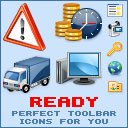


|
In order for the image to be stored, view and process using a computer, it must be represented in a digital form. Such representation, or in other words description of the image can be done in various ways. The simplest (at least to understand) way is to describe each element of the picture (point or pixel) separately. The description of a point is the description of its color. All pictures represented in such a way are called raster images. Photos, paintings, pictures with gradual color transition are usually represented in the computer as raster images. Special software has been developed to edit raster images: raster graphic editors. Most of them can be used only to view images and possibly slightly correct them (change brightness, contrast, color balance). Other editors are powerful tools not only for correction but also for combining parts of different images (creating collages) and for drawing. The leader among these editors is Adobe Photoshop. However, drawing from scratch in such editors is quite difficult though possible. For this tasks, vector graphic editors are obviously better suited. Vector images are described by mathematical formulae. Elements of the picture are not pixels but objects (lines, figures etc.). For example, to describe such objects as a line, we need to specify its start and end coordinates. For raster images, we would have to describe each point of the line and the thicker the line the more points it would contain and the larger its description. It is much easier to draw pictures from scratch in vector editors that it is in raster editors. In particular, schemes and plans as well as poster-like images (i.e. not containing gradual color transitions) obviously have to be used using vector editors. However, they can hardly help in creating of photographic quality images or paintings. The leader among vector editors is CorelDRAW, though many other vector graphic editors exist: Macromedia FreeHand and Macromedia Flash. Raster images have a problem with scaling. Increase in image size usually leads to decrease in image quality (granularity appears). If the quality needs to be preserved when the image size increases, the amount of disk space required to store this image increases. The quality of a vector image almost doesnít depend on its scale, and therefore the increase in its scale doesnít lead to increase in the amount of disk space required. This is one of the primary advantages of vector graphics. The trend in the development of graphic programs is to conquer the areas, for which they werenít initially developed. Thus, raster and vector editors tend to approach each other in the comprehensiveness and power of their tools. Nowadays Photoshop is not a pure raster editor; similarly CorelDRAW has quite powerful tools for processing raster graphics. Currently, a document created in a powerful graphic editor is usually a combination containing multiple objects, different in how they are described (for example, raster and vector images, text fields etc.). The document can contain information about layers, transparency of some image areas etc. Thus, the graphic document can have a complex object structure. Most computer graphics newbies usually have difficulties understanding when to use a specific kind of editor. It is often the case that they try to use technologies natural for raster editors when working with vector editors and vice versa. A computer graphics professional can easily choose the most suitable graphic editor depending on the task. It has both raster and vector editor at hands. Thatís why in our book we will consider both types of editors: raster Photoshop and vector Flash. We have chosen Photoshop because of its extreme popularity and functionality. Flash is used because it is a simple and quite convenient vector editor, has incredibly powerful and convenient tools for working with animation and its output files can be displayed by Web-browsers. Thus, I suppose that the basic difference between raster and vector graphics is now clear. However, we should note that usually vector editors can import raster images into a vector graphic composition and vice versa: export vector images into raster ones. For example, Corel Draw can do this. |
|
|
|
Copyright © 2006-2022 Aha-Soft. All rights reserved. |
|
